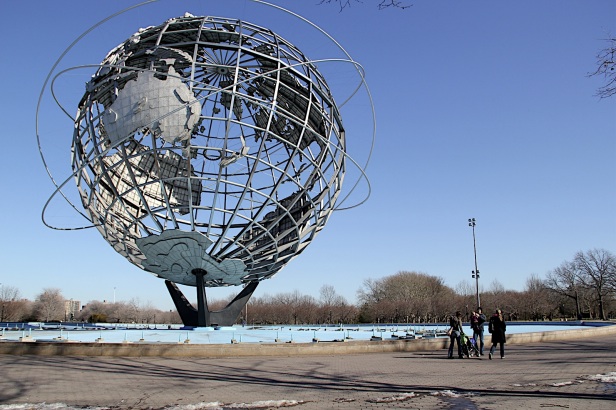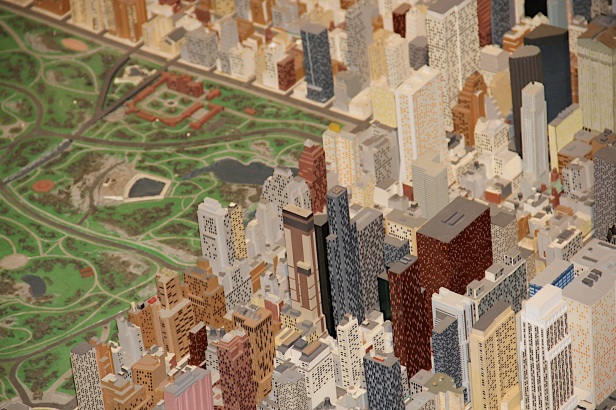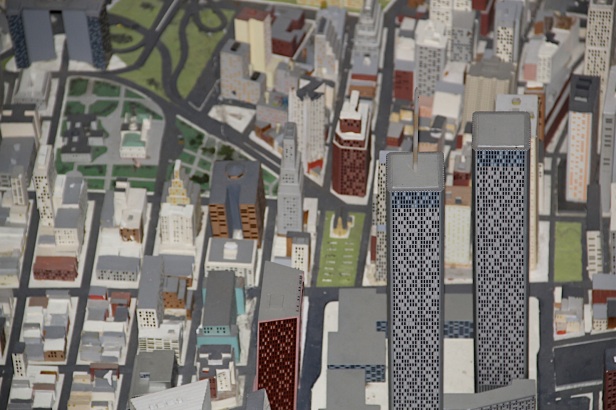 In the NYC Panorama, the Empire State building is only 13cm tallPhoto: John Pavlus
In the NYC Panorama, the Empire State building is only 13cm tallPhoto: John Pavlus
The Panorama of the City of New York is one of a kind: Built under Robert Moses himself for the 1964 World’s Fair, its 9,335 square feet encompass “every single building constructed before 1992 in all five boroughs,” or 895,000 individual structures. (The panorama was updated many times through 1970, and then again in 1992.)
Standing before the map is like looking out the window of a plane while flying into or out of LaGuardia, only you actually have the opportunity to find your own house, if you’ve ever lived pretty much anywhere in the 5 boroughs.
Words do not do this grandiose exercise in model building justice, and few have seen it, distant as it is from mass transit in a city where not many have cars. So I felt lucky to visit it in person at the Queens Museum of Art, the building directly adjacent to that giant stainless steel globe you might remember from the movie Men in Black.
 The Unisphere in Flushing Meadows, Queens, directly adjacent to the museum housing the PanoramaPhoto: John Pavlus
The Unisphere in Flushing Meadows, Queens, directly adjacent to the museum housing the PanoramaPhoto: John Pavlus
After it was used in the World’s Fair, the Panorama was re-used as a tool for urban planning. All the public housing on the map (not pictured) stands out in sharp relief — it’s red.
Gazing across its immensity, I was struck by the thought that no one will ever build a model of this sort again. Physical models of this type have been replaced by Google Earth and GIS; even the new Google Maps will show you buildings in three dimensions on your phone.
 Central Park South in the NYC PanoramaPhoto: John Pavlus
Central Park South in the NYC PanoramaPhoto: John Pavlus
All the pictures in this post were taken by filmmaker, writer and design pundit John Pavlus. They’re not re-touched, and yet they bear an eerie resemblance to the ‘isometric perspective’ of games like SimCity and Cityville, to which we may attribute some of the current fad for urbanism (that and the ongoing urbanization of Americans and millennials especially). The strange flatness of these images arises in part because the map is so big that Pavlus had to use a zoom lens to snap these pictures.
 The Twin Towers in the NYC PanoramaPhoto: John Pavlus
The Twin Towers in the NYC PanoramaPhoto: John Pavlus



